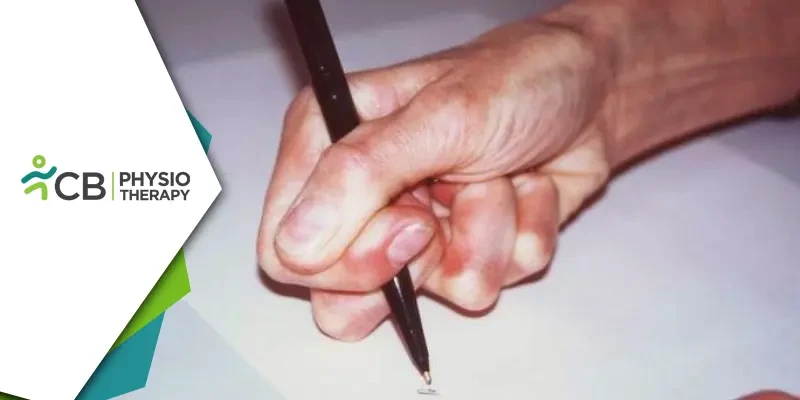Writer's hand, medically known as writer's cramp, is a form of task-specific focal dystonia that affects the hand and fingers during handwriting. It's a condition that can significantly impact those who write frequently, such as writers, students, journalists, and office workers. The symptoms include involuntary muscle contractions, abnormal postures, and discomfort or pain in the hand and fingers. Physiotherapy plays a crucial role in managing this condition by alleviating symptoms, improving hand function, and enhancing the overall quality of life.
Understanding Writer's Hand
Writer's hand is characterized by involuntary muscle contractions that make writing difficult and sometimes painful. It typically manifests as persistent muscle cramps and pain in the hand, fingers, and sometimes the forearm. Unnatural positions of the hand or fingers when attempting to write, loss of fine motor control, difficulty in controlling the precise movements needed for writing, shaking of the hand or fingers during or after writing.The exact cause of writer's cramp is not fully understood, but it is believed to be related to abnormalities in the brain's processing of motor functions. Factors such as repetitive use of the hand, poor writing ergonomics, and stress may contribute to its development.
Impact of Writer's Hand
The impact of Writer's hand can be profound, affecting both professional and personal life. For individuals whose careers depend on writing, such as authors, teachers, and journalists, this condition can be particularly debilitating. It can lead to decreased productivity, frustration, and even psychological stress due to the inability to perform everyday tasks.Role of Physiotherapy in Managing Writer's Hand
Physiotherapy is an effective intervention for managing Writer's hand. It involves a range of treatments and exercises designed to alleviate symptoms, restore normal function, and prevent further complications. Here's how physiotherapy helps:Physiotherapists begin with a comprehensive assessment to understand the severity and specific characteristics of the condition. This includes evaluating the range of motion, muscle strength, posture, and handwriting techniques. Understanding the individual's daily activities and ergonomic setup is also crucial.
1: Stretching and Strengthening Exercises
Specific exercises can help alleviate symptoms and improve hand function:
A: Stretching Exercises: Stretching the muscles of the hand, fingers, and forearm to reduce tension and improve flexibility.
B: Strengthening Exercises: Strengthening the small muscles in the hand and fingers to enhance endurance and control.
2: Neuromuscular Re-education
This involves retraining the brain and muscles to perform coordinated movements more effectively. Techniques include:
A: Sensory Re-education: Using sensory feedback to improve motor control.
B: Task-specific Training: Practicing specific tasks that are problematic, such as writing, in a controlled manner to improve performance over time.
3: Manual Therapy
Manual therapy techniques performed by physiotherapists can help reduce muscle tension and pain. These may include:
A: Massage: Gentle manipulation of the hand and forearm muscles to relieve tension. Joint Mobilization: Techniques to improve joint mobility and function.
4: Use of Assistive Devices
In some cases, assistive devices such as splints or ergonomic writing tools can be beneficial. These devices help maintain proper hand positioning and reduce the strain on the affected muscles.
5: Relaxation and Stress Management
Since stress can exacerbate symptoms, physiotherapists may incorporate relaxation techniques into the treatment plan. These can include:
a: Breathing Exercises: Techniques to reduce overall stress and muscle tension.
b: Mindfulness and Relaxation Training: Methods to help the patient remain calm and focused, reducing the impact of stress on the condition.
6: Biofeedback
Biofeedback is a technique that involves using electronic monitoring to convey information about physiological processes. In the context of writer's hand, biofeedback can help patients become aware of and control involuntary muscle contractions.
7: Taping and Bracing
Kinesiology taping and bracing can provide support to the affected muscles and joints, helping to alleviate symptoms and improve function.
Writer's hand is a challenging condition that can significantly impact one's ability to write and perform daily tasks. However, with the help of physiotherapy, individuals can manage symptoms, improve hand function, and enhance their quality of life. Through a combination of assessment, education, exercises, manual therapy, and relaxation techniques, physiotherapists play a vital role in the comprehensive management of writer's hand.
If you are experiencing symptoms indicative of writer's hand, seeking professional assistance is crucial. Early intervention not only prevents the condition from exacerbating but also facilitates the restoration of writing capabilities. With a tailored physiotherapy regimen, you can effectively address the challenges associated with writer's hand and maintain your dedication to writing. Please do not hesitate to reach out to us for further information or to schedule a consultation.

